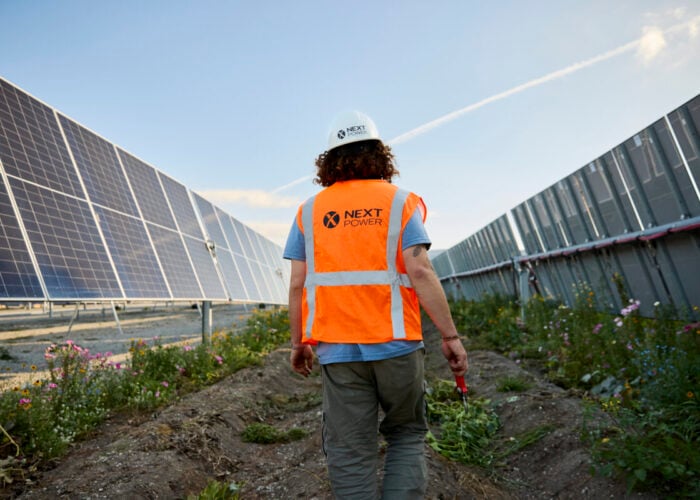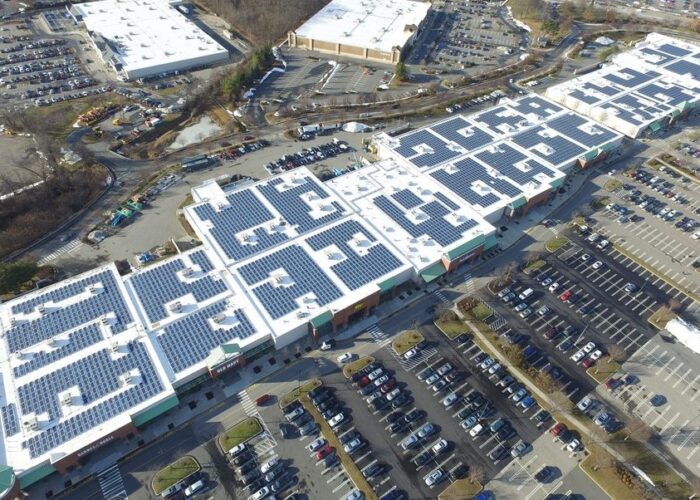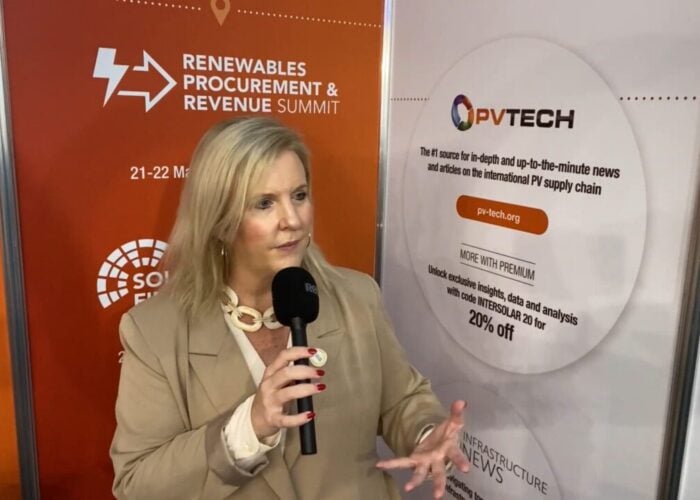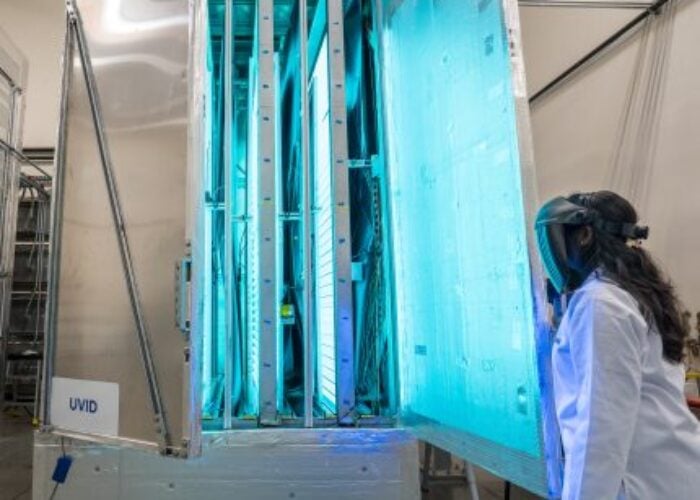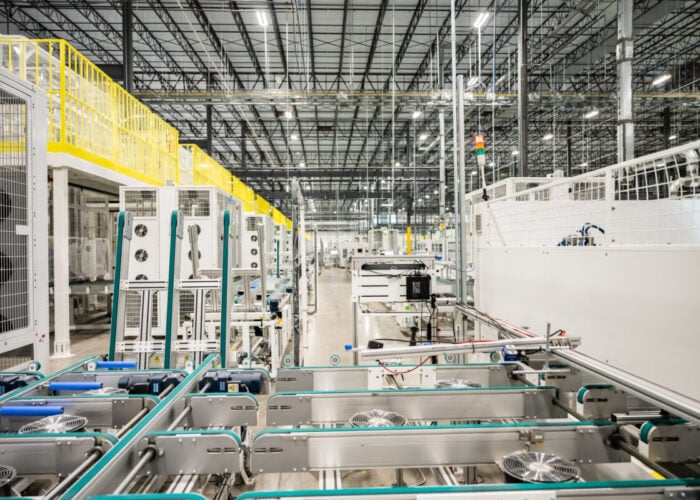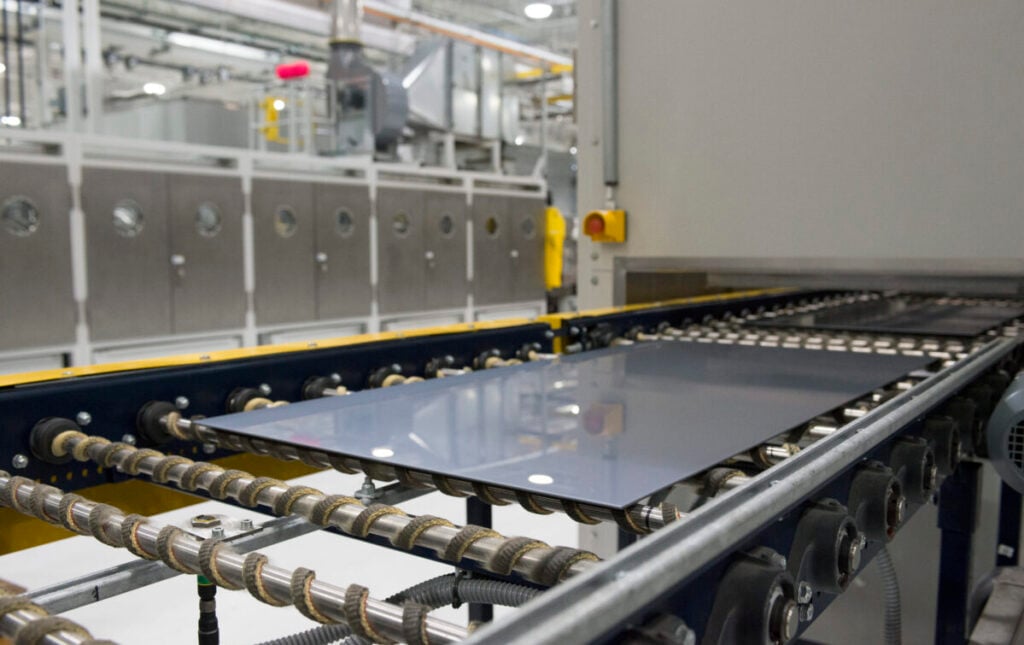
Cadmium telluride (CdTe) thin-film solar manufacturer First Solar has issued revised guidance to reflect the expected impact of new tariffs set by Donald Trump’s administration.
This is because the company assumes that the current applicable 10% universal tariff will remain throughout the year.
Try Premium for just $1
- Full premium access for the first month at only $1
- Converts to an annual rate after 30 days unless cancelled
- Cancel anytime during the trial period
Premium Benefits
- Expert industry analysis and interviews
- Digital access to PV Tech Power journal
- Exclusive event discounts
Or get the full Premium subscription right away
Or continue reading this article for free
In its revised guidance for the year, issued along with its first quarter 2025 results yesterday (30 April), the company has reduced its net sales guidance for 2025 from US$5.3-5.8 billion to US$4.5-5.5 billion. Module sales for the year is now expected to be between 15.5-19.3GW, when before it was forecast at between 18-20GW. Finally, the capital expenditure only sees a change in the lower end guidance from US$1.3 billion to US$1 billion, while the higher end remains at US$1.5 billion.
Moreover, First Solar forecasts module sales for Q2 2025 to be between 3-3.9GW, while advanced manufacturing production credit available under Section 45X to be between US$310-350 million.
“Despite these near-term challenges, we believe on balance, the political and trade environment continues to be an overall long-term favourable from a First Solar perspective,” said Mark Widmar, CEO of First Solar during the earnings call for the first quarter of 2025.
With manufacturing facilities in India, which serves both the Indian and US markets, as well as Malaysia and Vietnam, almost exclusively serving the US market, First Solar will still be impacted by the now paused tariffs set by US president Donald Trump affecting all three of these countries in various rates. According to Widmar, despite the 90-day tariff pause and the 10% universal tariff mitigating the impact, this will still result in a “meaningful adverse gross margin impact to sales into the US, absent the duty being fully passed through to the module buyer”.
Uncertainty surrounding what will happen after the 90-day pause makes it challenging for the company to quantify the precise tariff rate that would be applied to First Solar’s modules shipped from the three Asian countries.
Out of its 66.1GW backlog at the end of March 2025, nearly 13.9GW comes from overseas production into the US. Widmar added that the company expects the Indian facility to pivot away from export to the US and produce more for the domestic Indian market.
Regarding the facilities in the Southeast Asia, Widmar said: “We will continue to evaluate best options to optimise production across the sites in a potentially reduced US demand environment for non-domestic product, but are mindful that we may need to further reduce or idle production at one or both of these locations, especially if the announced reciprocal tariffs are put in place.”
Production at both Malaysia and Vietnam has already been reduced earlier this year. First Solar decided to reduce the module production output with a combined 1GW in 2025, which will affect its Series 6 modules.
First Solar produced 4GW of modules in Q1 2025
During the first quarter of 2025, the company produced an even split of Series 6 and Series 7 modules with 2GW each. Module sales in the first quarter of the year reached 2.9GW.
Widmar added that the company’s domestic manufacturing expansion continued in Q1 with ramp-up at the Alabama facility. At the Louisiana facility – which will have an annual nameplate capacity of 3.5GW –, construction of the building has been completed, while equipment installation and commissioning are underway.
Commercial operation remains on track to begin in the second half of 2025, and once ramped will bring the company’s US nameplate manufacturing capacity to more than 14GW by 2026.
Regarding ongoing work on the company’s Copper Replacement (CuRe) technology, which aims to improve key performance metrics of its modules (Premium access), Widmar said: “We completed limited commercial production run of modules employing our CuRe technology from our lead line in Ohio during the quarter and continued to deploy these modules in both commercial and field test sites.
“Initial data indicates the enhanced energy profile expected from the superior temperature response and improved bifaciality of our CuRe technology is being realised. Furthermore, the laboratory accelerated life testing is confirming the industry’s leading annual degradation rate,” said Widmar.
‘Appropriate corrective actions implemented’ into Series 7 production process
During 2024, the company identified manufacturing issues affecting certain Series 7 modules that were manufactured in 2023 and 2024, which could cause a premature power loss once installed.
However, in the earnings call, the company was asked again about alleged quality issues—i.e. module performance—not only from Series 7 but also from Series 6. According to Widmar, Series 7 issues were already identified last year and the appropriate actions were taken care.
“Third-party report has validated that the root causes were identified appropriately and the appropriate corrective actions have been implemented into our production process effective back last year,” said Widmar.
In the call Philip Shen, Managing Director, Senior Research Analyst at Roth Capital, said: “Some of the customers that have bought the modules that are impacted by lower production. They’re sharing with us some of the production might be like 5% lower for some of these systems and just 7% lower production could bankrupt the projects.”
Mark Widmar, replied: “We will always stand behind our product to the fullest extent that’s required under our warranty obligation that we mutually agreed to with our customers at the time that we ship the product
“It starts with the requirement of sending us the modules, and we will test the modules appropriately under the requirements that are consistent with the IAC standards that both parties have agreed to, and to the extent those modules are below warranty thresholds including measurement error and few other things, then we’ll honor the obligation to replace the module.”
PV Tech reached out to First Solar concerning these quality issues previously mentioned and for more information regarding both the Series 6 and Series 7 issues mentioned by Shen.
“While we have seen media coverage regarding the issues you mention with First Solar, we believe it´s premature to reach any conclusions at this time,” a developer, who wished to remain anonymous, told PV Tech. The developer said it would work directly with First Solar to solve any quality or performance issues should they arise in the future.
Other developers and independent power producers, with a module supply agreement with First Solar, approached by PV Tech either declined to comment or have not replied at the time of publishing.
“There’s a lot of concern amongst the developer/IPP/investment community, and they’re looking at Kiwa PVEL and other technical advisory-type firms throughout the industry to help them validate the magnitude of the issue, and whether the issue has been addressed on newer modules,” said Tristan Erion-Lorico, VP of Sales and Marketing at Kiwa PVEL.
New AD/CVD case ‘on the table’
During the earnings call, Widmar also commented on the recent steep tariffs from the US Department of Commerce on anti-dumping and anti-subsidy tariffs against solar cell imports from Thailand, Vietnam, Malaysia and Cambodia, stating “we are pleased with the results”, adding: “We’re also well aware that the Chinese are shifting production to lower tariff regions in order to take advantage of our trade laws.”
Among the countries mentioned by Widmar are Indonesia and Laos, which have seen a surge of imported cells and modules compared to the same period a year ago, according to Widmar. Another country highlighted by the CEO of First Solar was Saudi Arabia, which has seen an increase in solar manufacturing announcements in the past twelve months, as covered by PV Tech.
Regarding taking action towards these countries, Widmar said: “As noted on our previous earnings call, all trade remedy options remain on the table, including initiating a new anti-dumping and countervailing duty case directed towards those countries where the data is supportive.”
“While it’s time consuming and resource intensive, First Solar will continue to engage in trade actions as long as it’s necessary to support a level playing field and ensure compliance with existing trade laws. And we will not hesitate to pursue a critical circumstances determination that if imposed, any new tariffs are retroactive.”
Earnings call transcript from Seeking Alpha.


